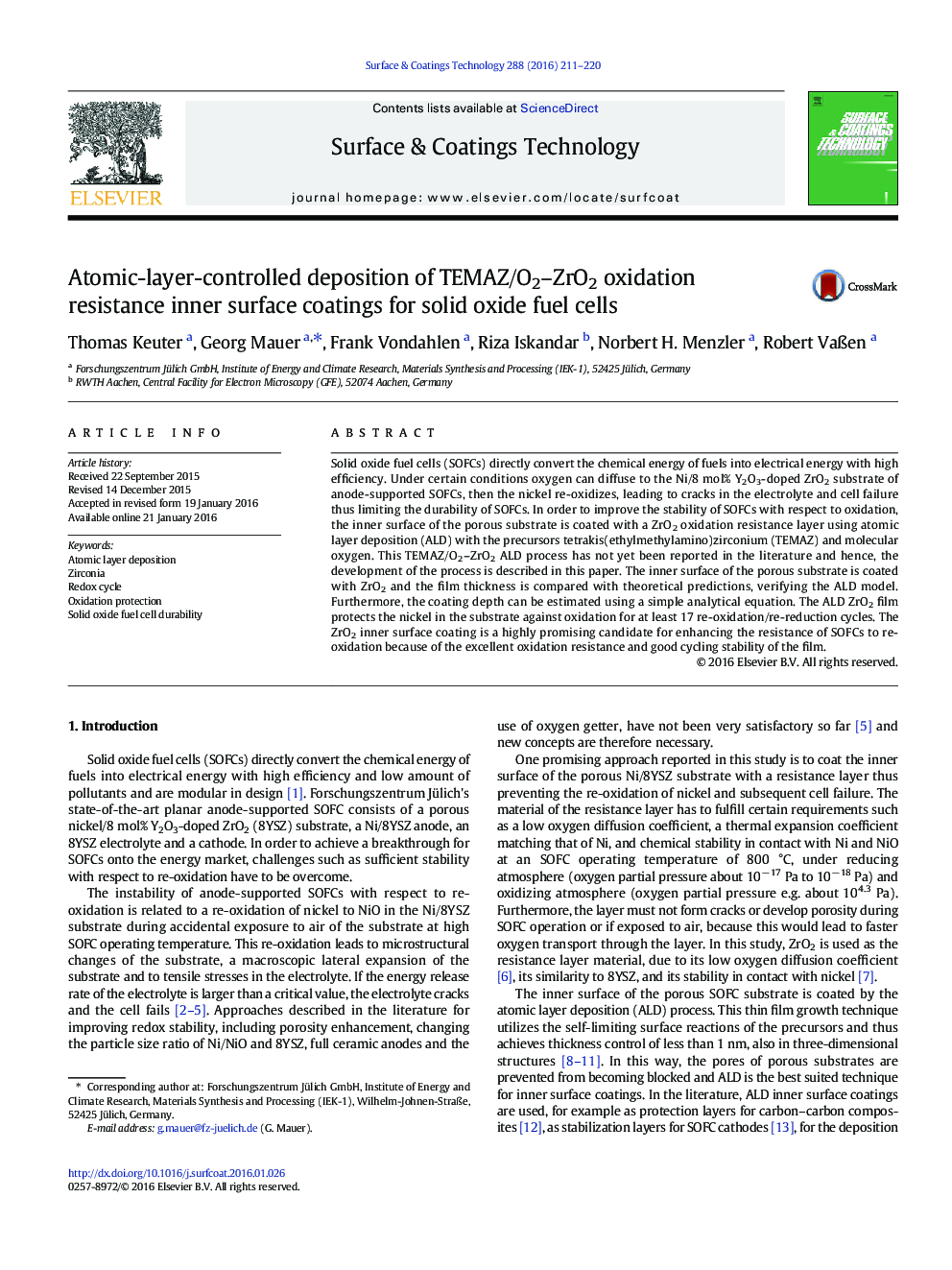| Article ID | Journal | Published Year | Pages | File Type |
|---|---|---|---|---|
| 1656722 | Surface and Coatings Technology | 2016 | 10 Pages |
Abstract
Solid oxide fuel cells (SOFCs) directly convert the chemical energy of fuels into electrical energy with high efficiency. Under certain conditions oxygen can diffuse to the Ni/8Â mol% Y2O3-doped ZrO2 substrate of anode-supported SOFCs, then the nickel re-oxidizes, leading to cracks in the electrolyte and cell failure thus limiting the durability of SOFCs. In order to improve the stability of SOFCs with respect to oxidation, the inner surface of the porous substrate is coated with a ZrO2 oxidation resistance layer using atomic layer deposition (ALD) with the precursors tetrakis(ethylmethylamino)zirconium (TEMAZ) and molecular oxygen. This TEMAZ/O2-ZrO2 ALD process has not yet been reported in the literature and hence, the development of the process is described in this paper. The inner surface of the porous substrate is coated with ZrO2 and the film thickness is compared with theoretical predictions, verifying the ALD model. Furthermore, the coating depth can be estimated using a simple analytical equation. The ALD ZrO2 film protects the nickel in the substrate against oxidation for at least 17 re-oxidation/re-reduction cycles. The ZrO2 inner surface coating is a highly promising candidate for enhancing the resistance of SOFCs to re-oxidation because of the excellent oxidation resistance and good cycling stability of the film.
Related Topics
Physical Sciences and Engineering
Materials Science
Nanotechnology
Authors
Thomas Keuter, Georg Mauer, Frank Vondahlen, Riza Iskandar, Norbert H. Menzler, Robert VaÃen,
